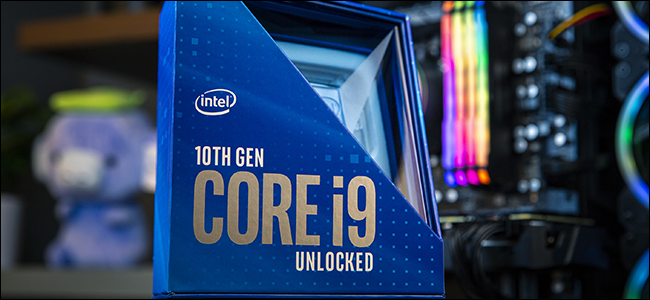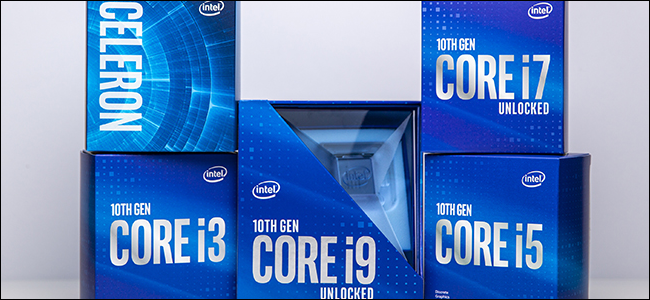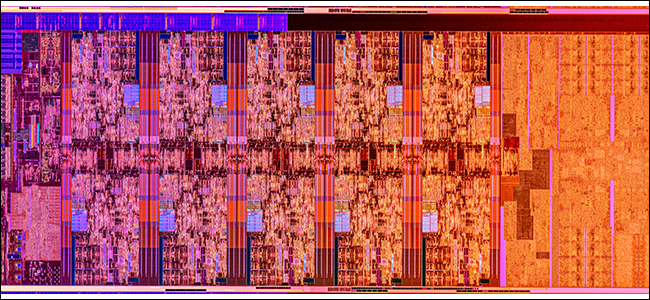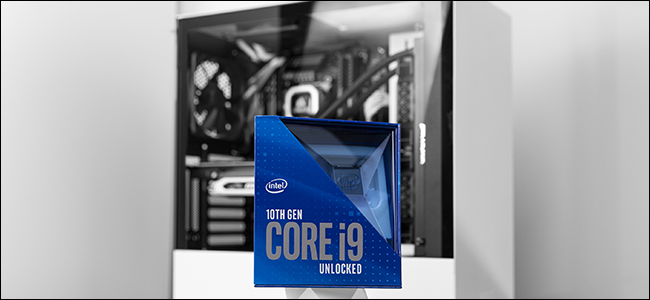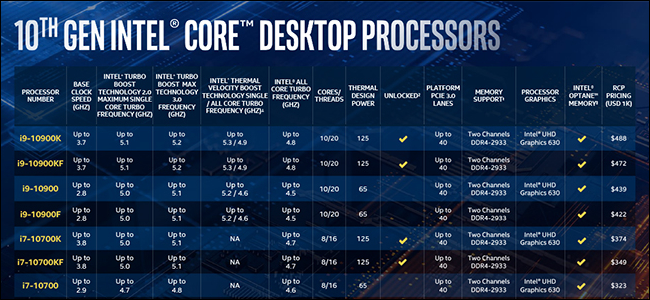Quick Links
Intel rose to AMD’s Ryzen 3000 challenge with its recent announcement of new 10th generation desktop processors. Dubbed Comet Lake-S, these CPUs bring a slew of improvements and a few surprising new features. Here’s what’s so great about them, and why PC builders, or anyone looking at prebuilt desktops, should consider one for their next rig.
Intel announced the new Comet Lake desktop chips on April 30. Earlier that month, it introduced new Comet Lake mobile processors for laptops and other smaller PCs. We won’t delve into the laptop side of things here. However, Intel said more than 100 laptops are slated to come out with the new 10th generation processors this year. As for the desktop processors, those should start rolling out in May 2020.
Lots of Cores
Comet Lake CPUs have a lot of cores. The Core i9-10900K is the top chip, with 10 cores and 20 threads. CPU cores process instructions from the system and make your PC work its magic. The more cores there are, the more instructions a system can process simultaneously. The system will also perform better.
The one snag is software developers have to take advantage of all those wonderful cores. Many don’t, either because they don’t need that much power, or their software isn’t optimized for mega-core machines.
Still, if your workload involves heavy apps, like photo- or video-editing, or games, then all those cores can help.
Hyper-Threading (Almost) All the Way Down
Hyper-Threading is Intel’s name for splitting one core into two virtual ones. As far as the operating system is concerned, you get two cores for the price of one. This means your machine can process instructions faster. In the past, Intel has been stingy with Hyper-Threading on desktops, restricting it to Core i7 and Core i9 processors.
For Comet Lake, however, you’ll find Hyper-Threading all the way down to Core i3 and Pentium parts. Generally, with Comet Lake-S, Core i3 parts have four cores and eight threads, Core i5 have six and 12, Core i7 have eight and 16, and Core i9s have 10 and 20.
That much Hyper-Threading is tremendous and means there could be surprising deals on lower-tier CPUs for budget gaming. When desktop Comet Lake reviews are in, bargain hunters will want to read them carefully for performance and pricing details, and the trade-offs with Core i3 processors.
New Motherboards
CPU makers generally try to make CPUs backward-compatible with older motherboards for a few generations, but that doesn’t last forever. At some point, the demands of new processors require new motherboard CPU sockets, and thus, new motherboards. That time has come with Intel Comet Lake.
Comet Lake-S uses a new LGA1200 socket. The new motherboards will be easy to spot, as they’ll have specific designations, including Z490, B460, H470, and H410.
Improvements to Heat Transfer Efficiency
The biggest problem any computer system must solve is how to cool. When computer parts get too hot, their safety mechanisms start ratcheting down performance. In other words, they get slower to prevent physical damage. The key, then, is for these components to transfer heat as efficiently as possible so fans or liquid cooling devices can expel the heat before it goes too far.
Intel’s new 10th generation CPUs are supposed to be better at transferring heat. Intel made some internal adjustments on it to increase the size of the integrated heat spreader (IHS). The IHS is the part that transfers the heat away from the CPU. The bigger size should keep the heat away from the CPU's innards more efficiently, and result in better performance.
Turn Off the Threads for Less Heat
As we discussed earlier, the upside of Intel’s Hyper-Threading is it allows the CPU to work faster. As usual with PC hardware, the downside is higher performance comes at the cost of generating more heat.
With Comet Lake, Intel makes it possible to shut off Hyper-Threading on a per-core basis. So, instead of one core operating like two, one will operate like one. With fewer cores working, the CPU generates less heat. With less heat, the cores that are working can perform at higher levels for longer periods.
It’s a bit unclear how this will all work in practice. However, it appears that turning off Hyper-Threading will require a dip into the motherboard BIOS instead of a simple switch in Windows 10.
Thermals Through the Roof
It’s a good thing Intel did all that work on heat-transfer efficiency because some of these CPUs are capable of getting really warm. The top-tier Comet Lake processors---the Core i9-10900K, the Core i7-10700K, and the Core i5-10600K---can generate up to 125 watts of heat under an intense workload. The measurement of this is called thermal design power, or TDP.
All of this just means PCs need a capable cooler to keep the higher-tier Comet Lake monsters from getting too hot.
Breaking Through 5.0 GHz
CPU speeds are measured in gigahertz. Generally, the higher the clock speed, the better a CPU performs. There are some big caveats to that statement, but we won’t get into those here.
Consumer CPUs usually haven't surpassed 5 GHz, but Intel has found a way. Comet Lake CPUs use a new technology called Thermal Velocity Boost (TVB). This will push a single core up to 5.3 GHz when the processor’s temperature is below 70 degrees Celsius. That single core will be able to perform at a higher level for short bursts, which can help for gaming and other demanding applications.
The Core i9 Comet Lake desktop CPUs will also have a feature called Turbo Boost 3.0 Max. This finds the two top-performing cores (not all perform equally well) on a processor and pushes their speeds a little higher for certain uses, such as gaming. Again, the result is a faster processor under certain workloads.
PCIe Overclocking, But No PCIe 4.0
Some Comet Lake motherboards will be capable of overclocking PCIe lanes to eke out more performance from components, like graphics cards. This capability will vary by motherboard, as it’s up to the manufacturer to make this feature a reality. This feature is mostly for extreme overclockers---the hot-rodders of the PC universe.
Something the new Intel CPUs won’t have is PCIe 4.0 capability---they'll stick with PCIe 3.0, instead. PCIe 4.0 helps components like graphics cards and storage drives perform at double the speed they currently do. However, all the components---from the graphics card, to the motherboard and processor---must support PCIe 4.0.
AMD already supports PCIe 4.0 in its Ryzen 3000 processors and X570 motherboards, but Intel chose not to follow that path just yet. This isn’t unreasonable, as AMD’s X570 boards require extra cooling to deal with this new version of PCIe.
Still, some high-end, Comet Lake-compatible motherboards are anticipating the upgrade and will have PCIe 4.0 built-in. This allows for a bit of future-proofing, but they won’t perform at PCIe 4.0 levels until Intel supports the new standard.
Those are the major features of the upcoming Comet Lake CPUs. There'll be other goodies baked in, like firmware for faster Ethernet and RAM, and Wi-Fi 6 integration.
It will be interesting to see how this line of CPUs compete with AMD’s Ryzen 3000 processors.

